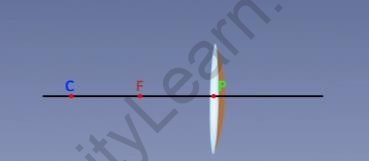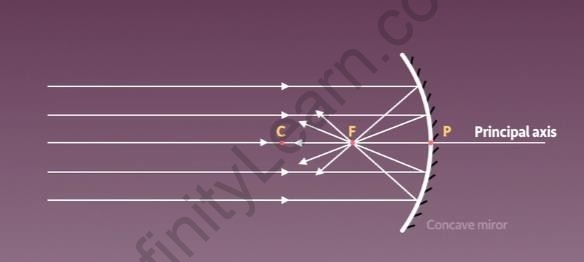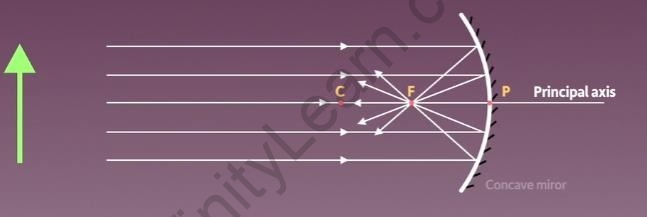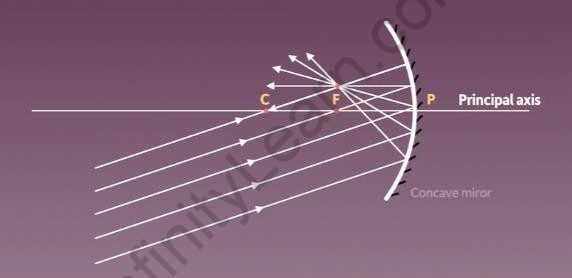Table of Contents
Table of Contents
- Spherical Mirrors
- Types of Images formed by a Concave Mirror
- Rays of Light Parallel to Each other as well as the Principal Axis
- Rays of Light Parallel to Each other but not Parallel to the Principal Axis
- Rays of Light not Parallel to Each other and Passing through the Principal Focus
- Summary
- What’s Next?
In the previous segment, we learnt about Spherical mirrors. In this segment, let us understand the focal point of a concave mirror.
What are spherical mirrors?
- Spherical mirrors are mirrors whose reflecting surface is a part of a sphere.
- The reflecting surface can be either curved inwards or curved outwards.
- The mirror whose reflecting surface is curved inwards is known as a Concave mirror.
- The mirror whose reflecting surface is curved outwards is known as a Convex mirror.
- For a concave mirror, the centre of curvature lies at the front of the reflecting surface.
- For a convex mirror, the centre of curvature lies behind the reflecting surface.
- The midpoint of the line segment joining the pole and the centre of curvature is known
as the focal point. It is denoted by the point ‘F’.

Focal point of a concave mirror
- The focal point is also known as the Principal focus as it lies on the principal axis.
- All the rays of light parallel to each other as well as the principal axis of a concave mirror converge at the focal point.

Rays of light parallel to each other and the principal axis
For example,
The sun is at a very large distance away from the earth. So, even though the rays of light are radially emitted by the sun, these rays are considered parallel when they reach the earth. That is, when an object is placed at infinity, the rays of light emitted from it are parallel to each other. The parallel rays of light follow the laws of reflection due to which the reflected light converges at the principal focus. Thus, the image of the sun is formed at the principal focus. If this image is focused on a paper, the temperature of the paper at that point will increase resulting in the burning of paper at that point.
What are the Different Types of Images Formed by a Concave Mirror?
The images formed by a concave mirror depend upon the light emitted from the object and how the rays of light are incident on the concave mirror. The different types of images formed by a concave mirror are as follows:
Also Check:
Rays of light parallel to each other as well as the principal axis
When an object is at infinity, the rays of light emerging from it are parallel to each other. Sometimes these rays are parallel even when the object is not at infinity. When these parallel rays of light are parallel to the principal axis as well, the reflected rays of light converge at the principal focus.

Reflection of parallel rays of light parallel to the principal axis
Rays of light parallel to each other but not parallel to the principal axis
When the rays of light emitted from an object are parallel to each other but not parallel to the principal axis, then the light after reflection, converges at a point that is not on the principal axis. This point of convergence is known as the Focus.

Reflection of parallel rays of light not parallel to the principal axis







